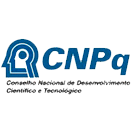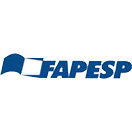Rufous-browed Peppershrike ( Cyclarhis gujanensis )
- Sent by Rodrigo Girardi Santiago - 06/12/2006
- 0 comments
16 cm. The iris and a mask in the face are red. The top of the head and the wings are ferruginous. The sides of the head are gray and the belly brown. In some regions there may be yellow areas in the chest and throat Distribution: From Mexico to Argentina. Habitat: Forest borders, secondary and gallery forests, cerrado, caatinga, parks and gardens, usually in the canopy. Diet: Insects, their larvae and fruits Reproduction: The female builds most of the nest with grass. The nest is a deep open basket covered with moss and attached to the tree with spider webs. Male and female take turns to incubate the eggs and feed the offspring (2 or 3).
Leia Mais



 Rodrigo Girardi Santiago
Rodrigo Girardi Santiago Bianca Caroline Rossi-Rodrigues
Bianca Caroline Rossi-Rodrigues Roney Vander Dos Santos
Roney Vander Dos Santos


